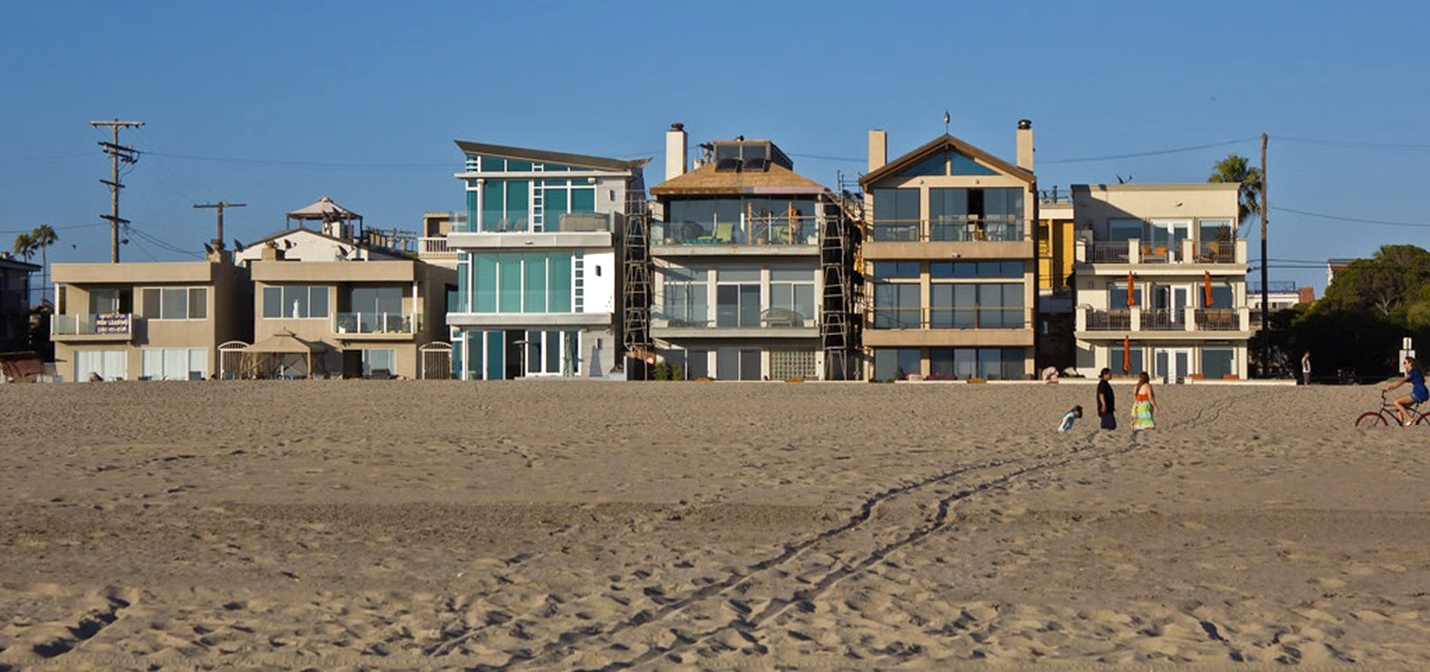
Boundaries of waterfront property can change. And today, more and more, homes near beaches or tidal rivers are losing land.
The issue? Climate-related sea level rise. The impact? U.S. coastlines will see tides rise by about a foot between now and 2050, according to the National Oceanic and Atmospheric Administration.
That’s a century’s worth of change in less than 30 years.
This trend, as you might imagine, is beginning to create serious problems for deed holders with properties near the water.
Rising Sea Levels, Falling Tax Revenues
Gradual loss of property diminishes its value. And the loss of waterfront property doesn’t just devalue the land of individual deed holders. It causes a broader financial erosion, too. It reduces the revenue on which local governments depend.
Indeed, rising sea levels can cause a total property loss. As sea levels keep rising, governments will wind up with abandoned homes on their hands.
Is there any answer for this multilayered problem? Oceanographer William Sweet, who studies sea level rise for the National Oceanic and Atmospheric Administration, says the best thing we can all do is to care about Earth’s climate, and live accordingly.
“You reduce emissions, you reduce your likelihood of higher sea levels,” Sweet told The Washington Post.
When Coasts Encroach

The Washington Post also discussed projections that 25,000+ Louisiana properties could literally go underwater by 2050 — making Louisiana the undisputed land loss leader. After Louisiana, the states with the most land at risk are Florida, North Carolina, and Texas.
Expect rising seas to impact thousands of New York and New Jersey properties in the years ahead, too. More than 2,500 Maryland buildings are in the path of swelling tides. Inland, neighborhoods on tidal rivers (like Philadelphia and D.C.) are feeling the rise.
Overall, sea level researchers have found some 650,000 U.S. homes likely to lose their current boundary lines by 2050. Many neighborhoods already struggle with the scourge of repetitive flooding.
Erosion and the Deed
Boundary lines appear on a home’s deed. Some boundaries are created by water. Erosion describes the wearing away of dry land by the gradual action of water. The general rule is this. The gradual, imperceptible movement of a water boundary changes the property acreage (as opposed to a sudden change, which doesn’t change the property lines).
As land slowly submerges under the high-water mark, the state becomes its title holder. That’s a general rule, accepted by the U.S. Supreme Court.
Know the legal vocabulary:
- The high-tide line means the average high tide over the last 18.6 years.
- Submergence is the “gradual and imperceptible” loss of land as water covers it for good (not just for the season.
So the burning question is: What happens to the homeowner’s title? As you might imagine, the answer is complicated, and evolving. But it’s clear that the legal description on the deed becomes obsolete once the deeded land is permanently inundated by tidal waters.
Takings by the Sea
In the aftermath of Hurricane Sandy, a good number of deed holders pursued their Constitutional rights under the Fifth Amendment. Its Taking Clause says private property may not be “taken for public use, without just compensation.”
We know a homeowner’s waterfront rights can’t be taken by governments through eminent domain without the owner receiving just compensation. But what if privately deeded land turns into public waters without the government’s intentional taking?
Our modern understanding of the Takings Clause evolves through court cases. Today, a government wouldn’t need to make a deliberate taking of private property. Even an unintended transformation of private land into public waters can count as a taking.
So, can the deed holder be paid by the government for the loss of now-submerged land? In such cases, the “property value” of the formerly deeded land may not amount to much. So it’s unlikely that the deed holder can make much of a claim. But we’ll expect a lot more legal action in this area.
Legal Description Change
Where a legal property description shows a water boundary, its location is based on the ordinary high-water mark. The county may have a formal but out-of-court process for recording changes in property lines. To find an example, we can look to Washington State, where Jefferson County lays out the following process:
- Gather a new title report (within the last month) that contains the tax parcel number; the address and/or directions to the property; the current legal description; and the identification of owners and lienholders.
- Schedule meeting with a county planner. Arrange for property inspections as directed.
- Complete the application form for a Boundary Line Adjustment (BLA). The applicant must state a brief description of the reason for the proposed boundary line adjustment, together with both the current legal description (with the boundaries as stated on the deed when the home was acquired), and the proposed legal description with the corrected boundaries. All deed holders must sign and date the application.
- Within 28 days, the county will review the form and issue its Determination of Completeness. Within 120 days, the county will issue its decision on the application.
- If the county planner assigned to the application issues an approval, it will be dated and notarized at the County Development Review Division.
The county auditor’s office will now file a Record of Survey prepared by a licensed surveyor. Finally, the adjusted title goes into effect when the applicant returns copies of “each recorded document bearing the county auditor’s stamp” to the Department of Community Development.
Staying Up-to-Date
Of course, seas could keep changing the contours of waterside property. So, ordering an up-to-date survey is essential when buying land bordered by water.
Know that the risk of flooding is high for waterside homes and homes located within a few miles of a coastline. Damages to coastal homes from wind, tropical storms, and hurricanes aren’t covered by the standard homeowner’s insurance policy, so understanding extended policies is a must. Learn more at Deeds.com…
Also know that climate is impacting titles in real time. For homes along coastlines or tidal rivers, the impact is most stark. We’re watching this, and will keep Deeds.com readers informed.
We present the information in this article to help readers spot issues and begin their own due diligence. It is not financial or legal advice. Consult your local licensed professionals for guidance in case-specific situations.
Supporting References
Phillips Petroleum v. State of Mississippi, 108 S. Ct. 791, U. S. (1988).
The Department of Community Development for Jefferson County, Washington: Boundary Line Adjustment (BLA) form.
Jefferson County Code, Article II, Chapter 18.35.
Brady Dennis for The Washington Post: Rising Seas Could Swallow Millions of U.S. Acres Within Decades (Sep. 8, 2022; discussing an analysis published by Climate Central).
Ken Hart with Carney Badley Spellman (Seatle, WA) via CarneyBadleySpellman.com: Boundary Law Issues in Washington (PDF; Sep. 14, 2017).
Henry S. Wulf for Carlton Fields, P.A.: Climate Change Ate My Property (Sep. 29, 2019).
Land Title Institute via ALTA.org: Title 101 – Water Rights and Related Issues (PDF; Ch. 9).
Eugene A. Pinover: After the Storm – Determining Title to Changing Shoreline Property (PDF; reprinted from the New York Law Journal by Willkie Farr & Gallagher via Willkie.com on Dec. 3, 2012).
And as linked.
More on topics: The Property Survey – Do You Need One?, Your Home’s Setback Requirements
Photo credits: Bryan via Flickr / Creative Commons, licensed under CC BY-ND 2.0 Generic; and Nikola Tomašić, via Pexels/Canva.
